With our wooden seed flats built it was time to fill them with some potting soil! The thing is @idyllwild and I don't have any and we don't want to buy any either if we can help it! We want to save money and prefer not to rely on industry when appropriate.
Lucky for us there are a lot of resources around here for us to scrounge, as is the case on most farms/homesteads!
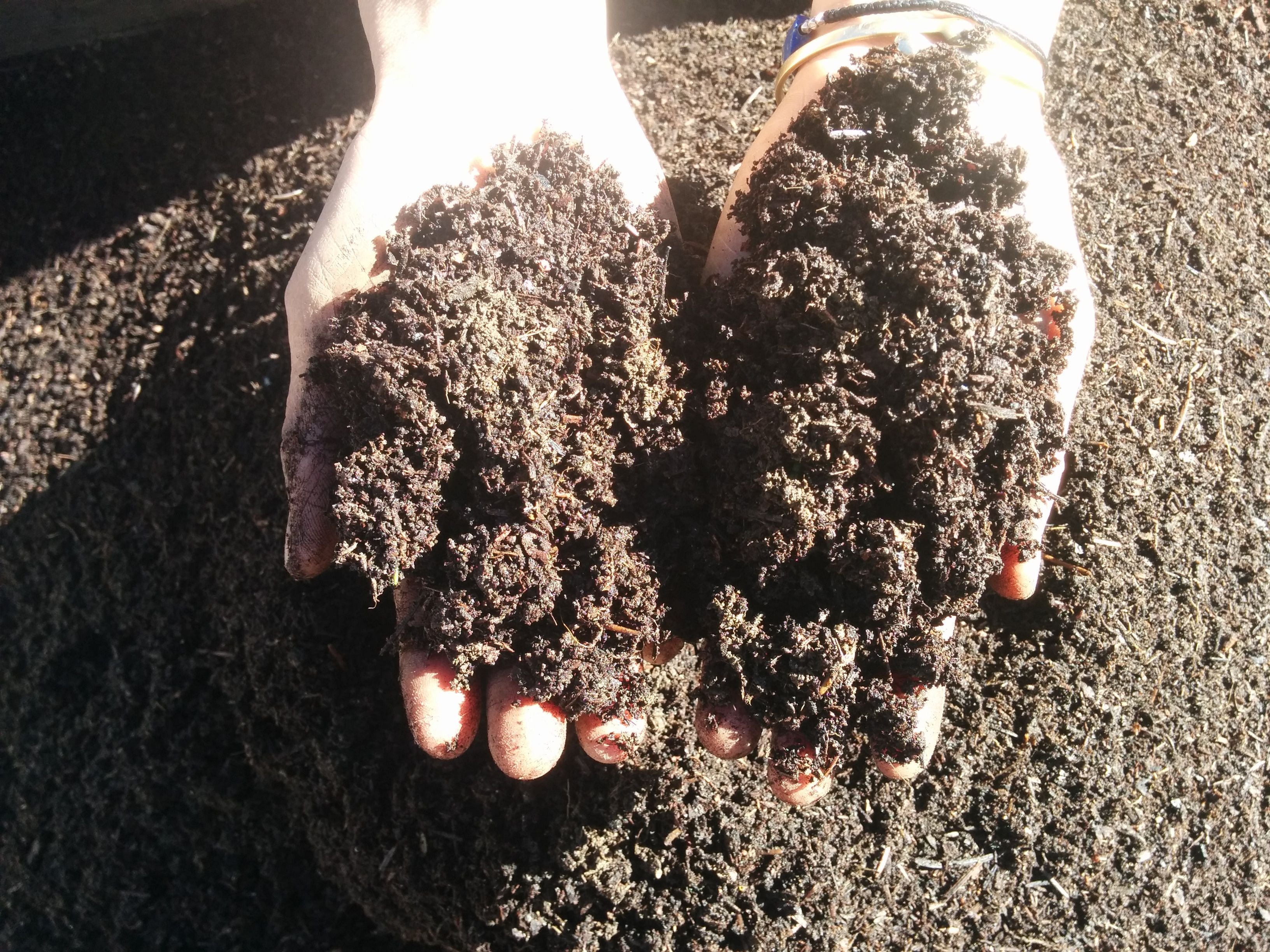
Our goal was to create a quality potting soil that is light and fluffy, has good water retention and good drainage.
Our first thought was to mix some garden soil, compost, forest humus and sand. We started exploring the property to see what resources we had at hand.
First stop: Compost pile.
An old compost pile we discovered looked like it would be nicely broken down. But we stuck a fork in it and opened it up a bit to discover it was smelly, soggy and anaerobic. So that idea was out!
Next Stop: The garden.
There are several beds in the garden that have been worked for several years with nice fluffy, rich in organic matter, clay based soil.
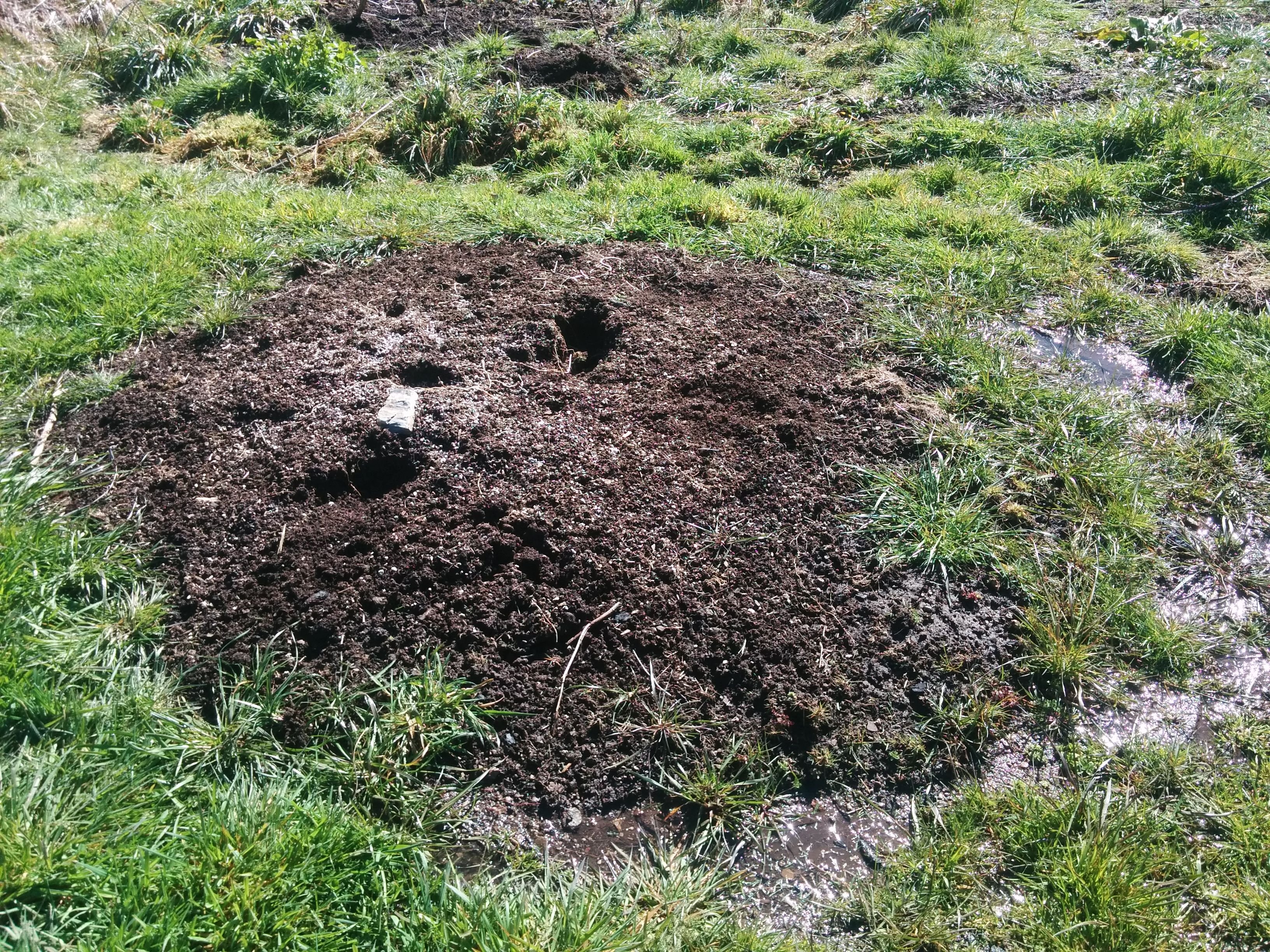
The clay under the grass has some nice tilth to it but the clay in the garden beds is even crumblier. It looks like a lot of compost had been added to it.
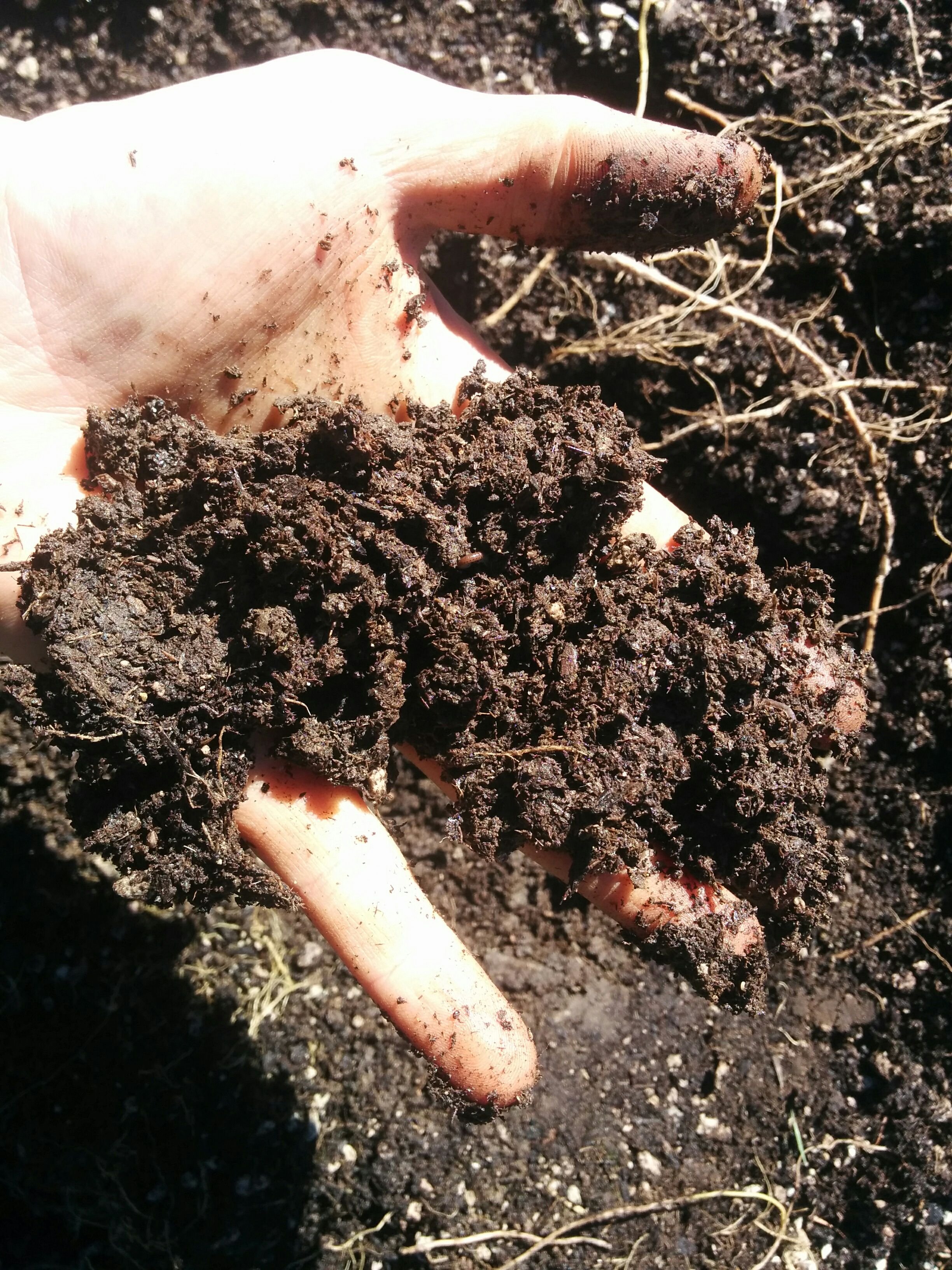
This clay garden soil with lots of organic matter would be a good component for the potting mix. It has a lot of nutrients, healthy soil life (we saw a lot of worms) and good water retention qualities. Gathered a little here and there, scraping the tops of some of the garden beds.
Next Stop: Sand Pile
Walking around a bit more we discovered a sandy area that turned out to be an old horse ring. There is a pile of sand off to the side, unused.
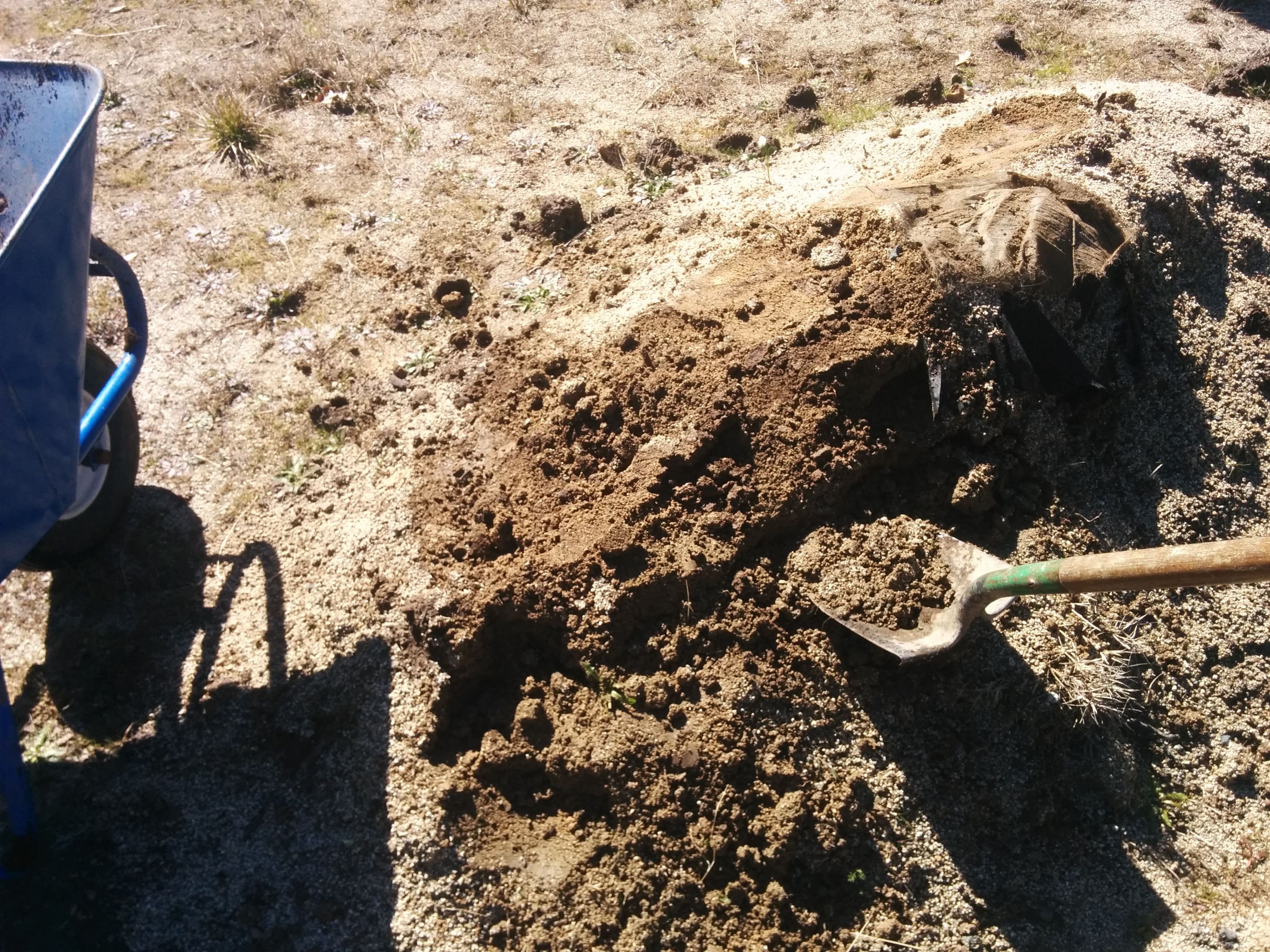
Happily the sand is a mixture of course an medium grain sand which is what we are looking for with good drainage quality.
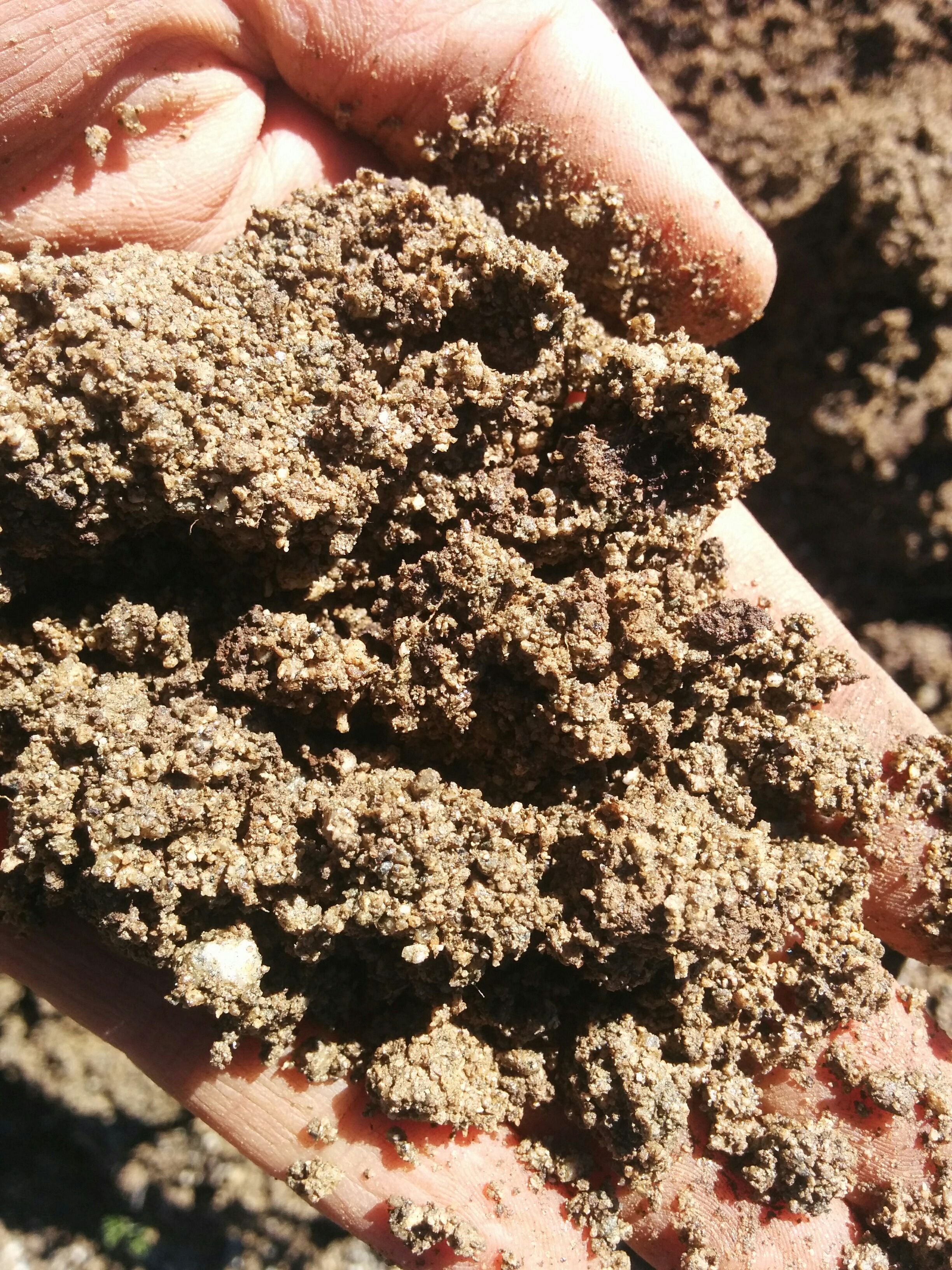
We toted some sand back to the garden in a wheelbarrow. It was wet and boy was it heavy!
Next Stop: The Forest!
Exploring the forest was by far the most fun part of this project. We are neighboring quite a bit of old growth forest and state land, but there is some forest on this property as well which we can easily access.
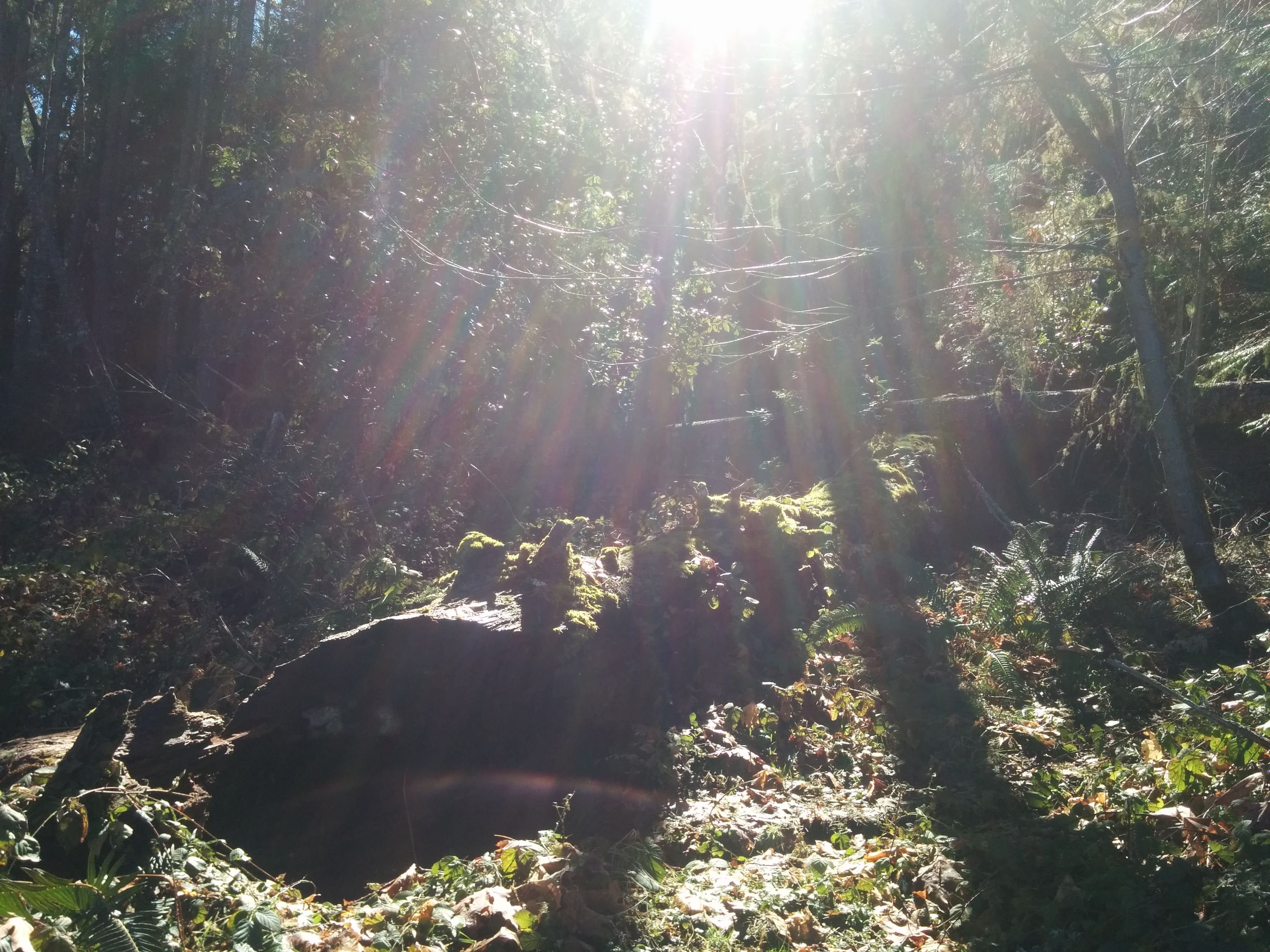
This forest is dominated by oak, mixed conifer and Madrone.
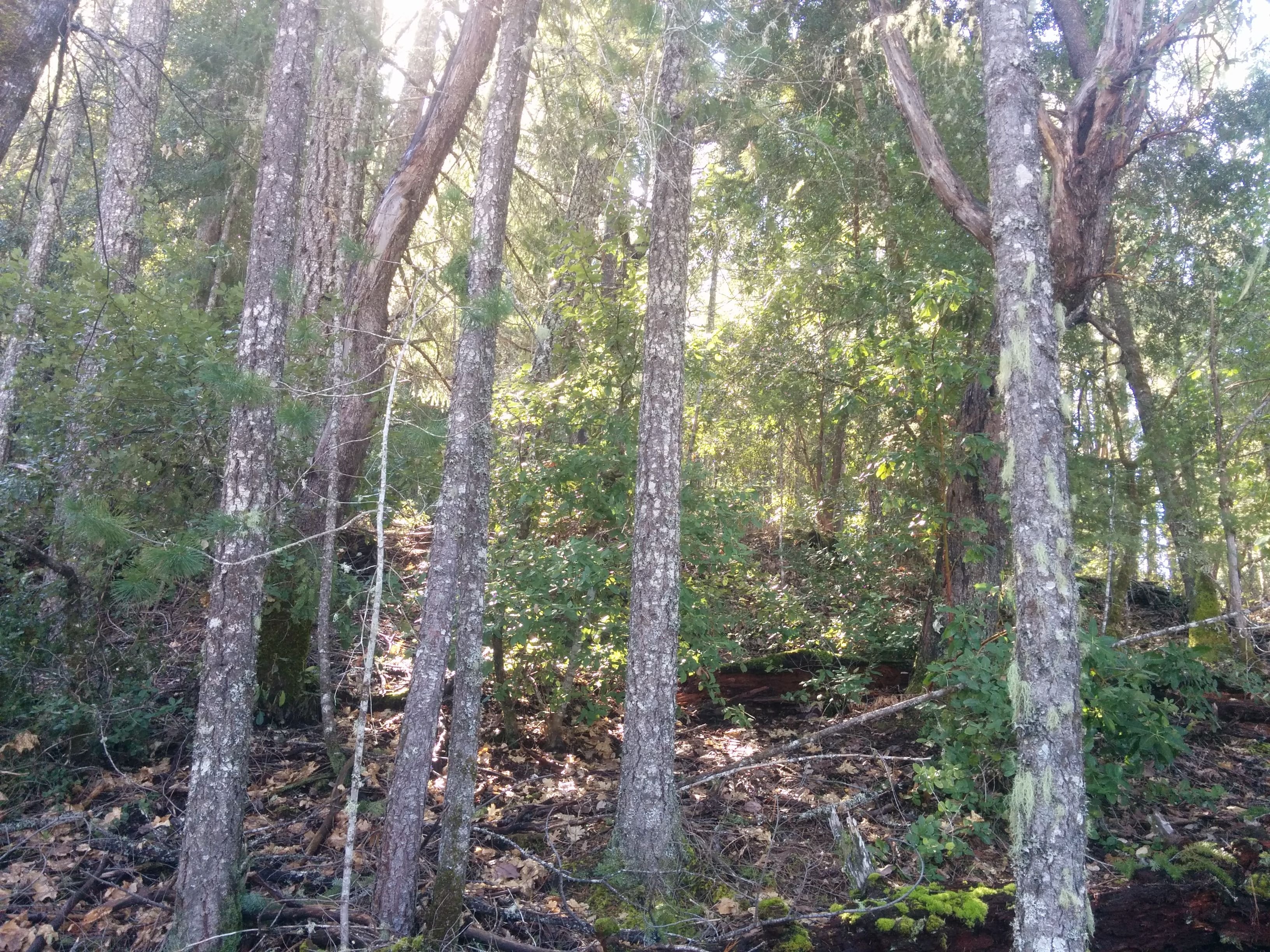
The forest floor is littered with branches, oak leaves, pine needles and madrone leaves.
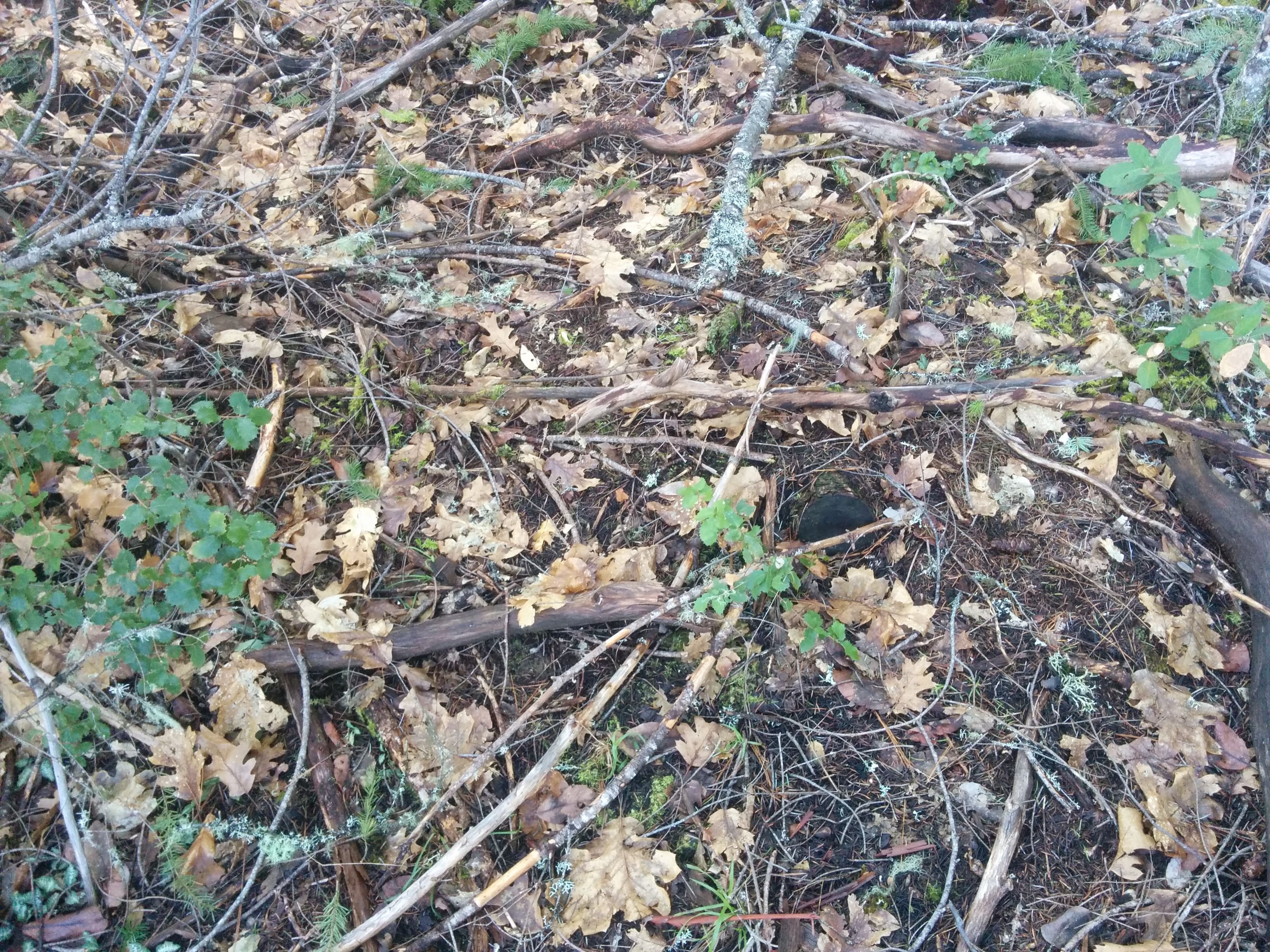
Which is exactly what makes up the humus directly below the layer of leaf litter. Brushing the leaves aside we find this rich, fluffy organic matter that is mostly partially broken down leaves and branches.
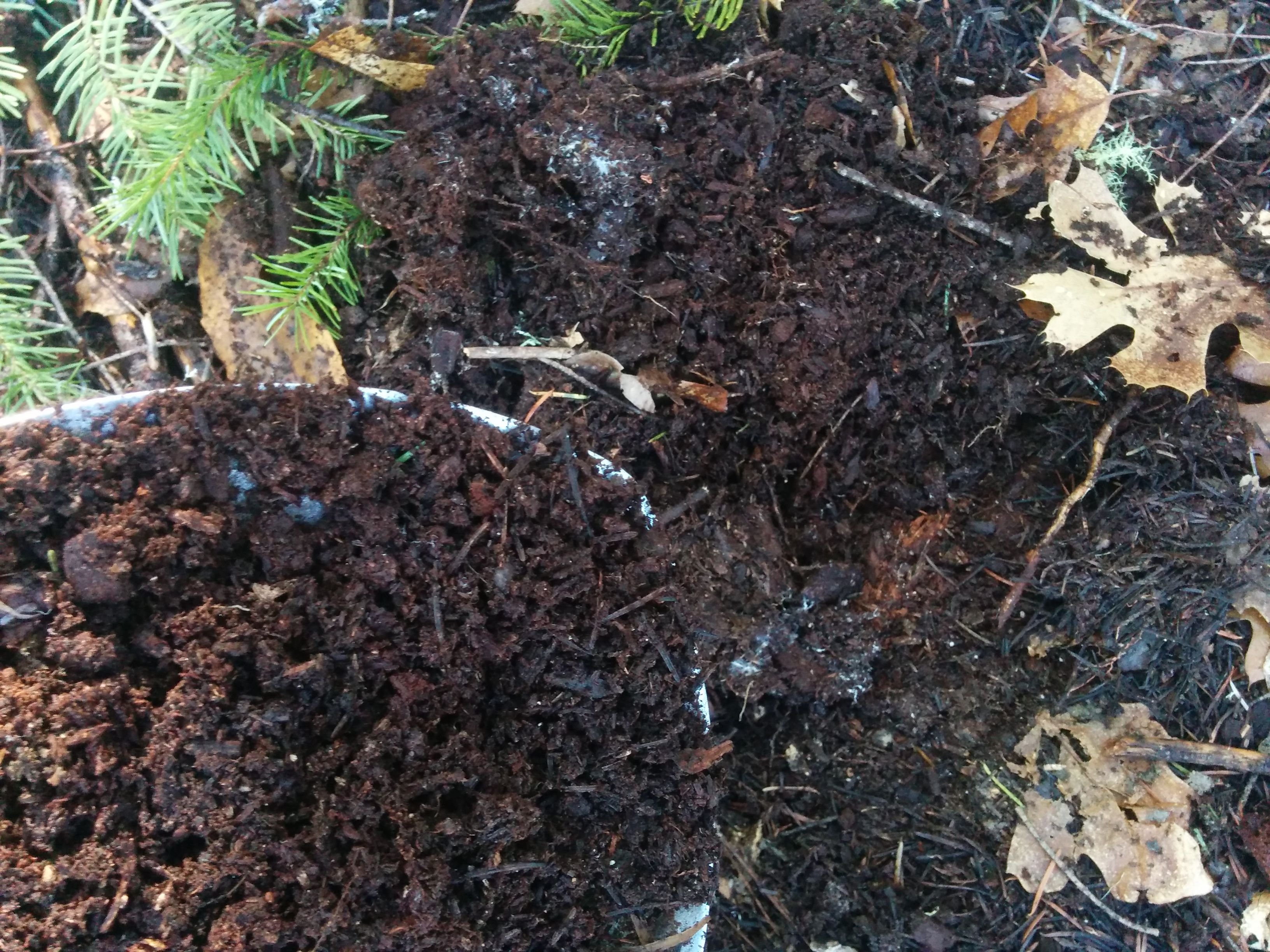
This would be perfect to add to our soil mix to give it more water retention, fluffiness and some diversity in soil life.
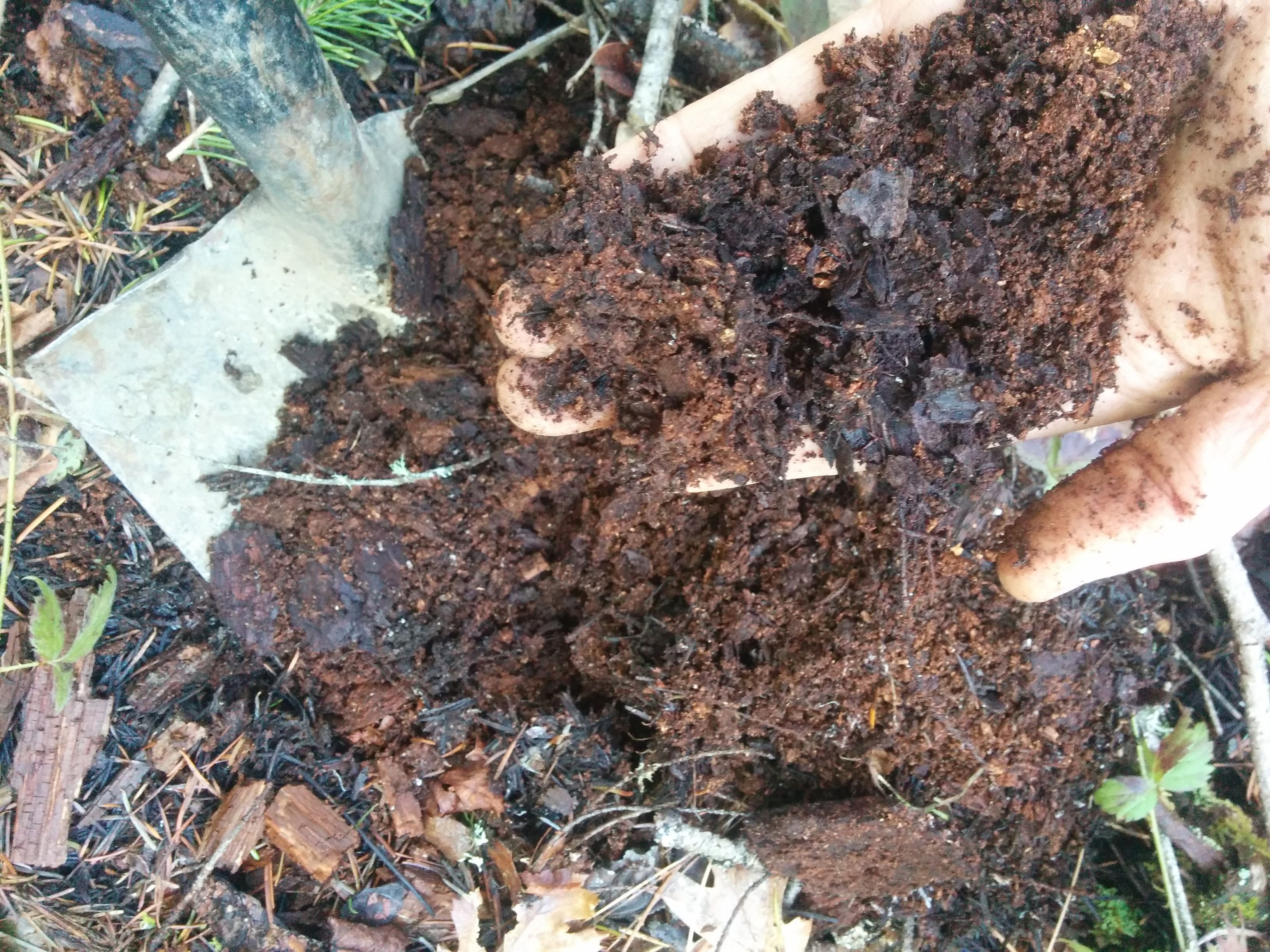
We gathered up some forest humus being careful not to take too much from any one place and to brush back leaves and branches over the places we disturbed. Thank you forest for sharing your abundance!
Back to the garden to process the materials
We set up a station to screen the materials using an old garden cart and a screen made from 1/4" hardware cloth framed by 2x4's.
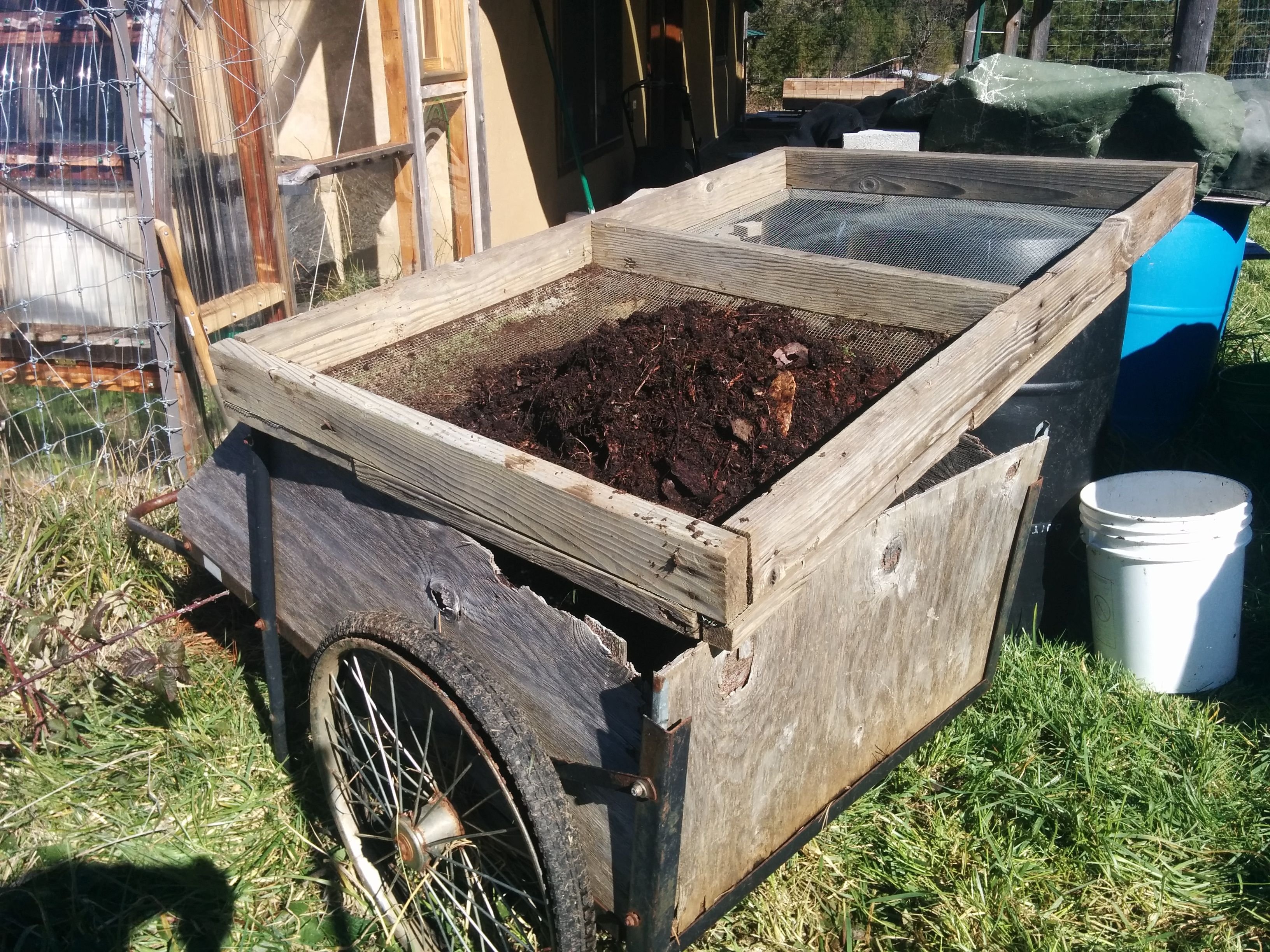
Sifting the material by hand, we rubbed it back and forth over the top of the screen to separate the fines from the bulkies. We put the bulky woody material from the forest humus aside to use later for mulching trees or something else that may come to mind. We set the pebbles that came out of the garden soil aside to possibly use for drainage in planters.
You could also design a smaller framed screen with handles that you can shake back and forth over a wheel barrow or other container to prevent the need for rubbing the soil over the screen as much
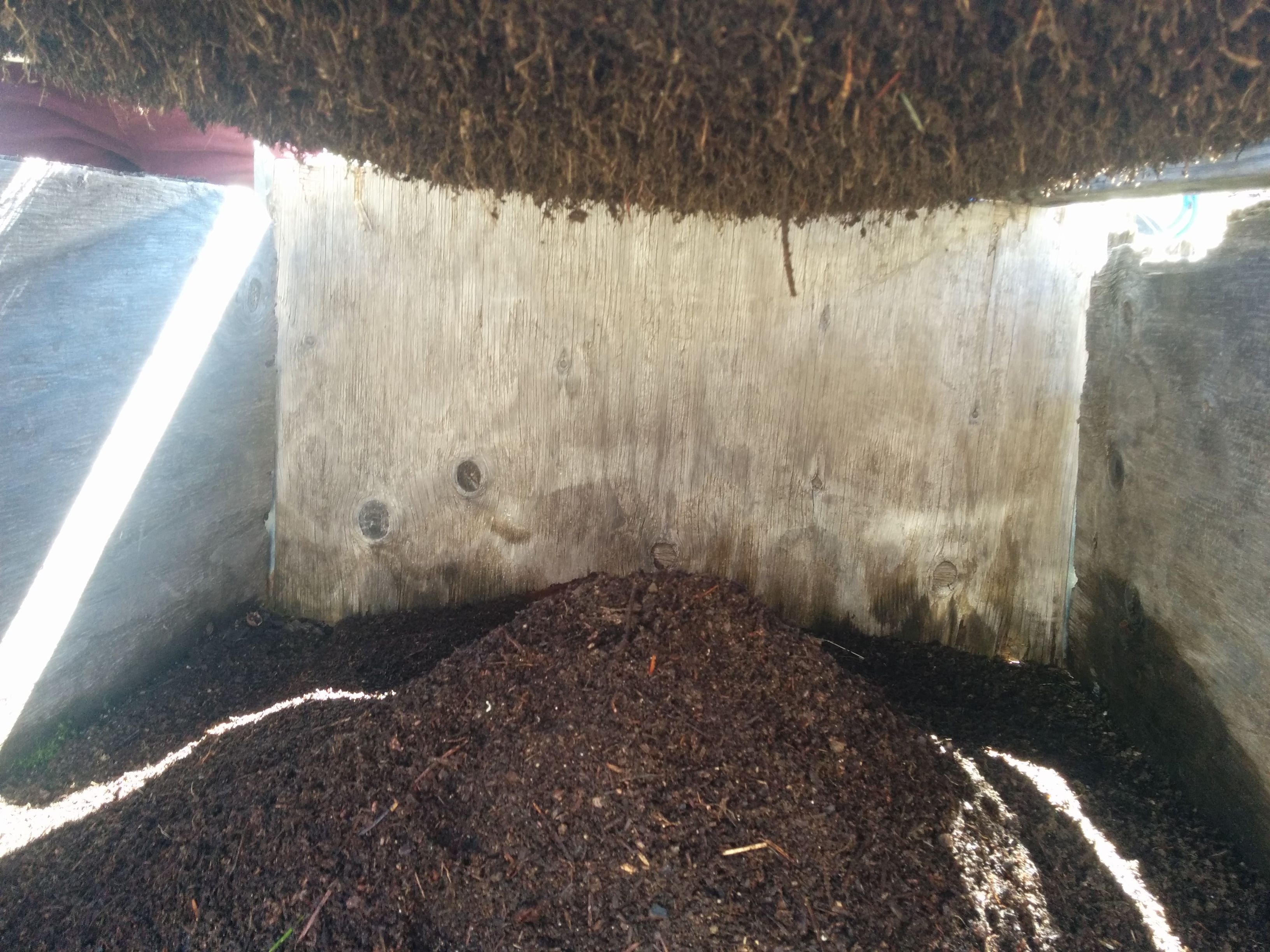
The resulting material is so ridiculously fluffy!
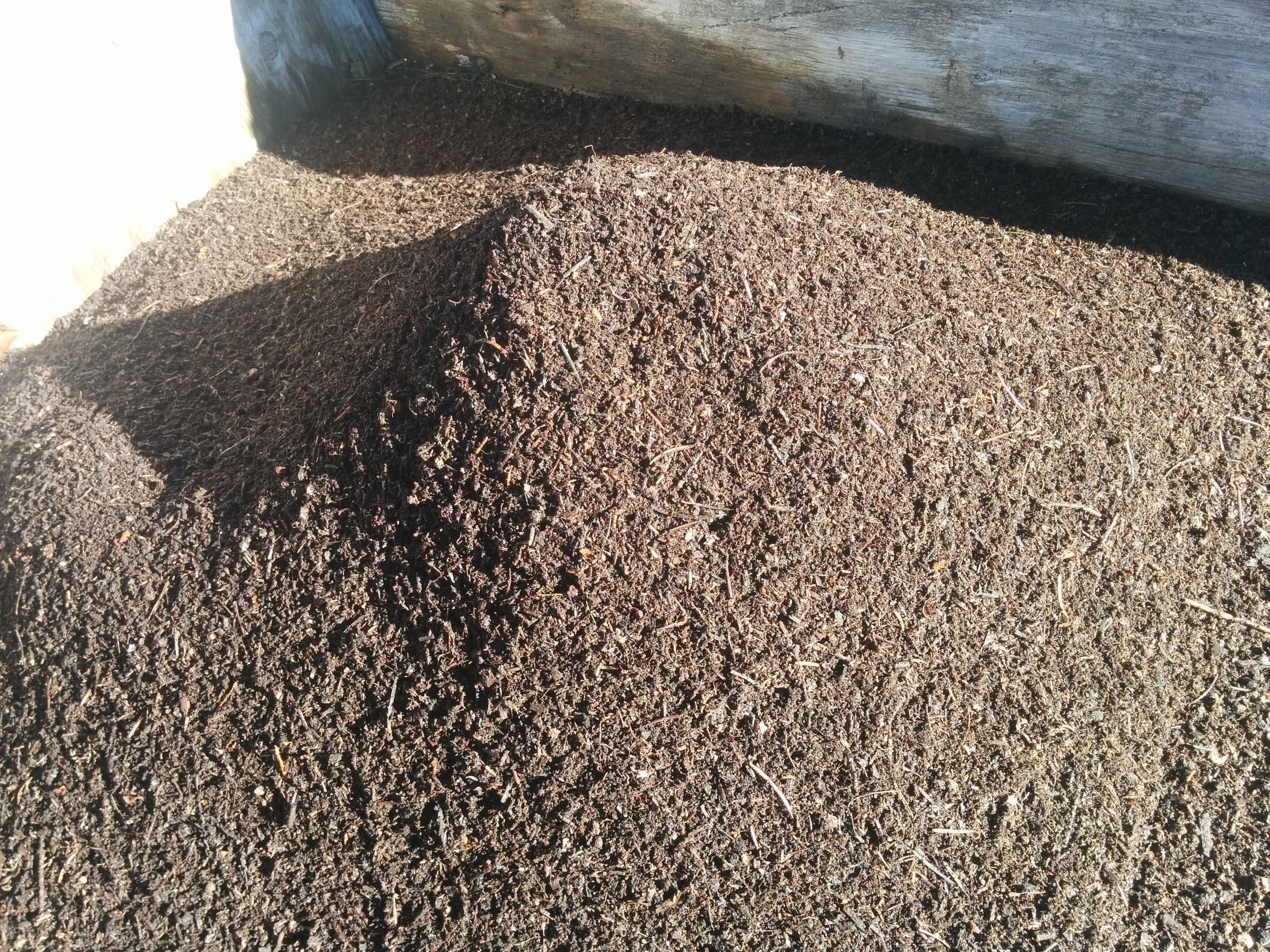
We couldn't help but plunge our hands in with delight :)

We didn't bother to sift the sand because it wasn't too clumpy. Turns out there were a few clumps of clay and small rocks that came through but it wasn't enough to make much difference for our mix.
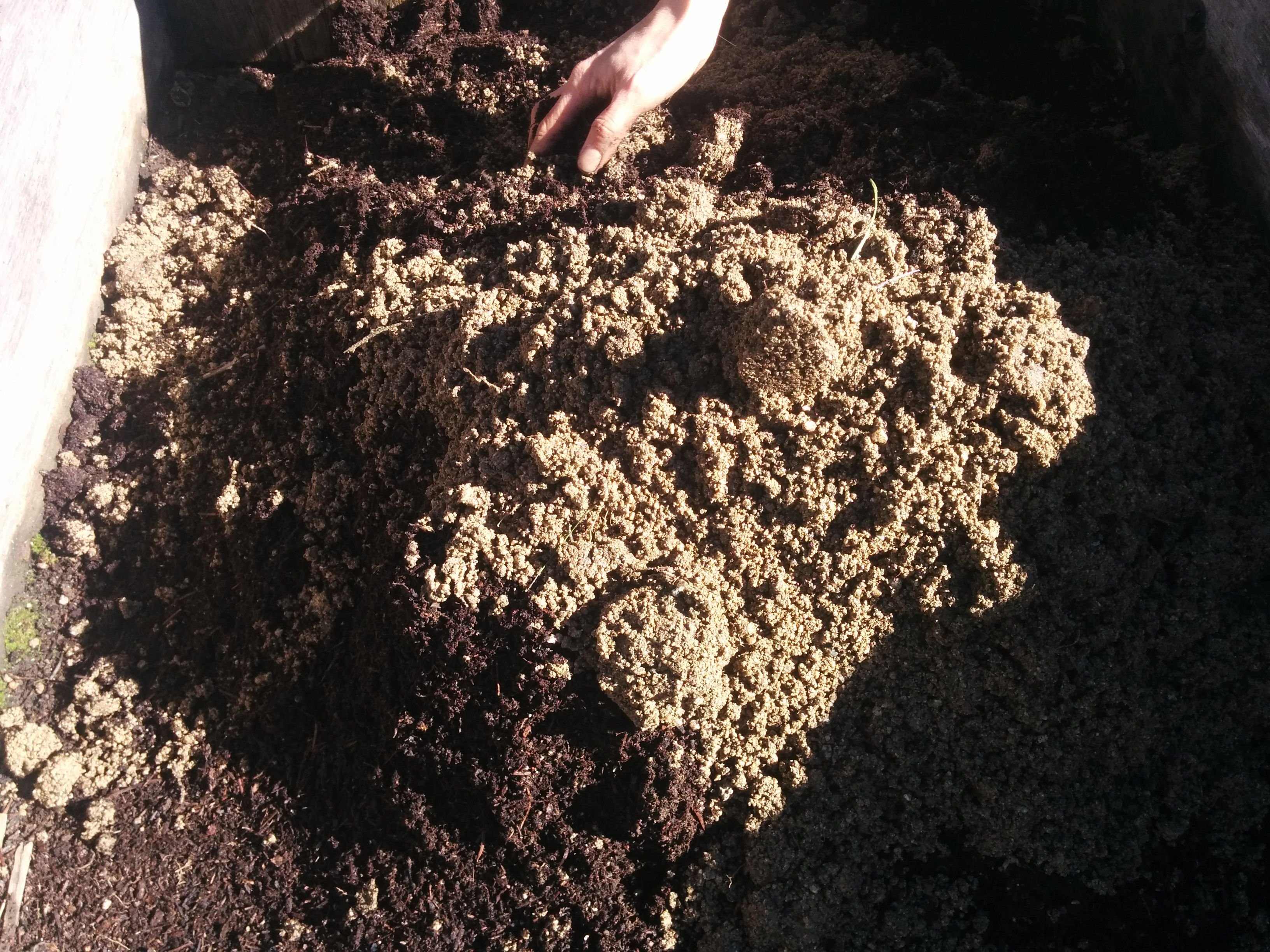
Halfway through the first batch of sifting we realized the garden cart was on its last legs and being very rickety it looked like it was about to fall apart on us so we modified our station and used two barrels to hold the frame over a tarp.
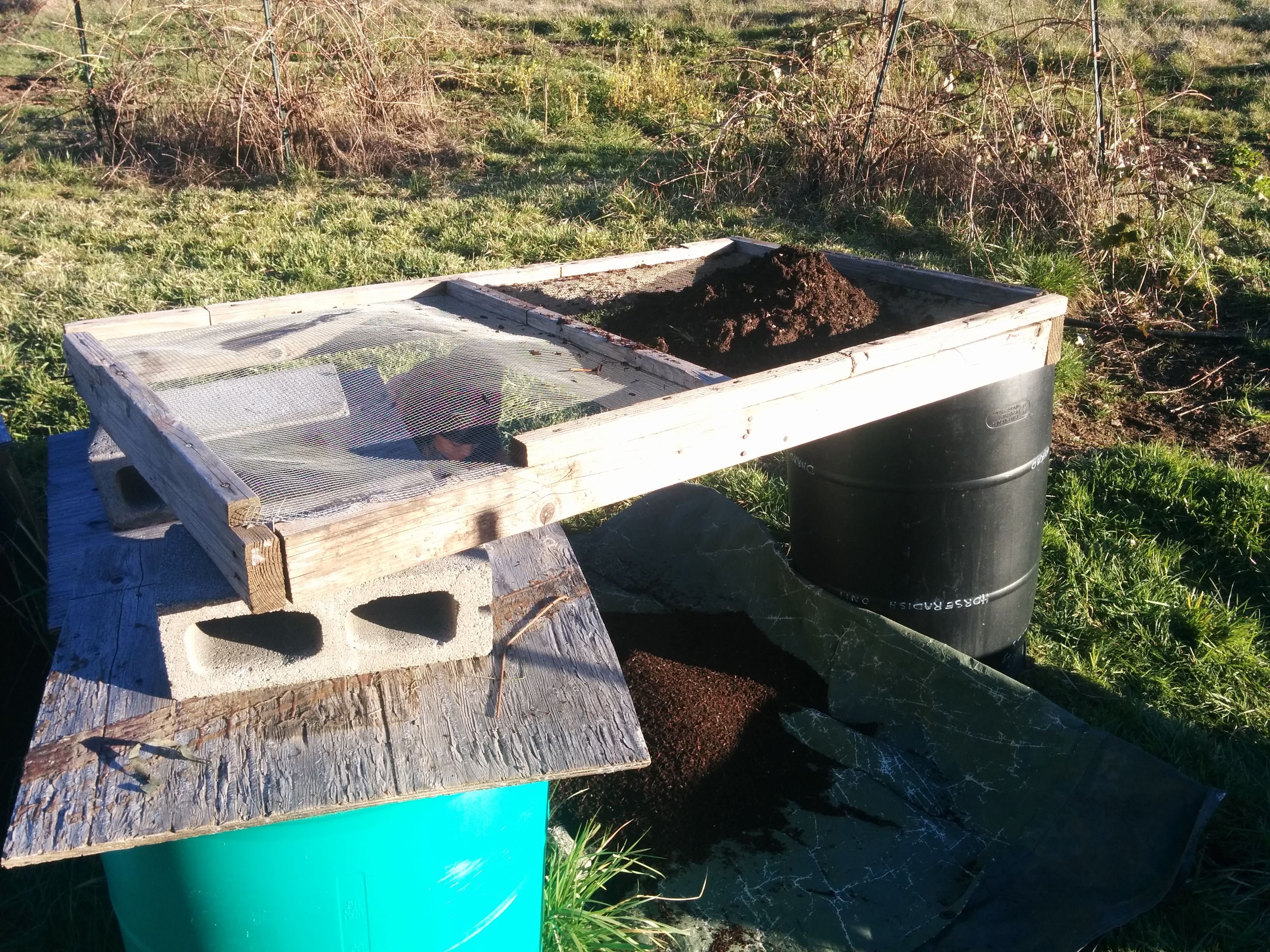
This worked even better.
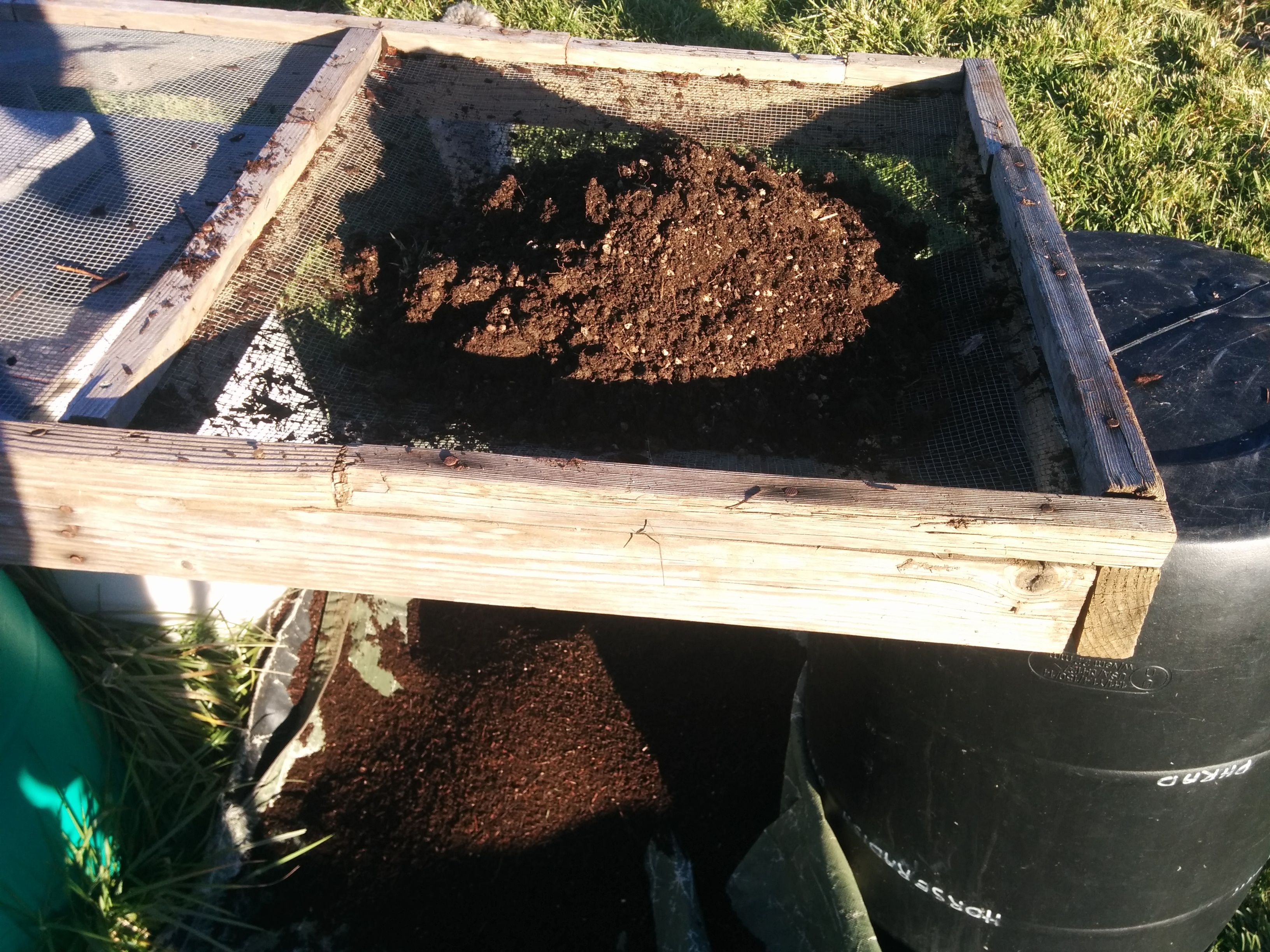
It was easy to pour the sifted materials from the tarp into a wheelbarrow, where we stirred it with a shovel to get it all mixed together.
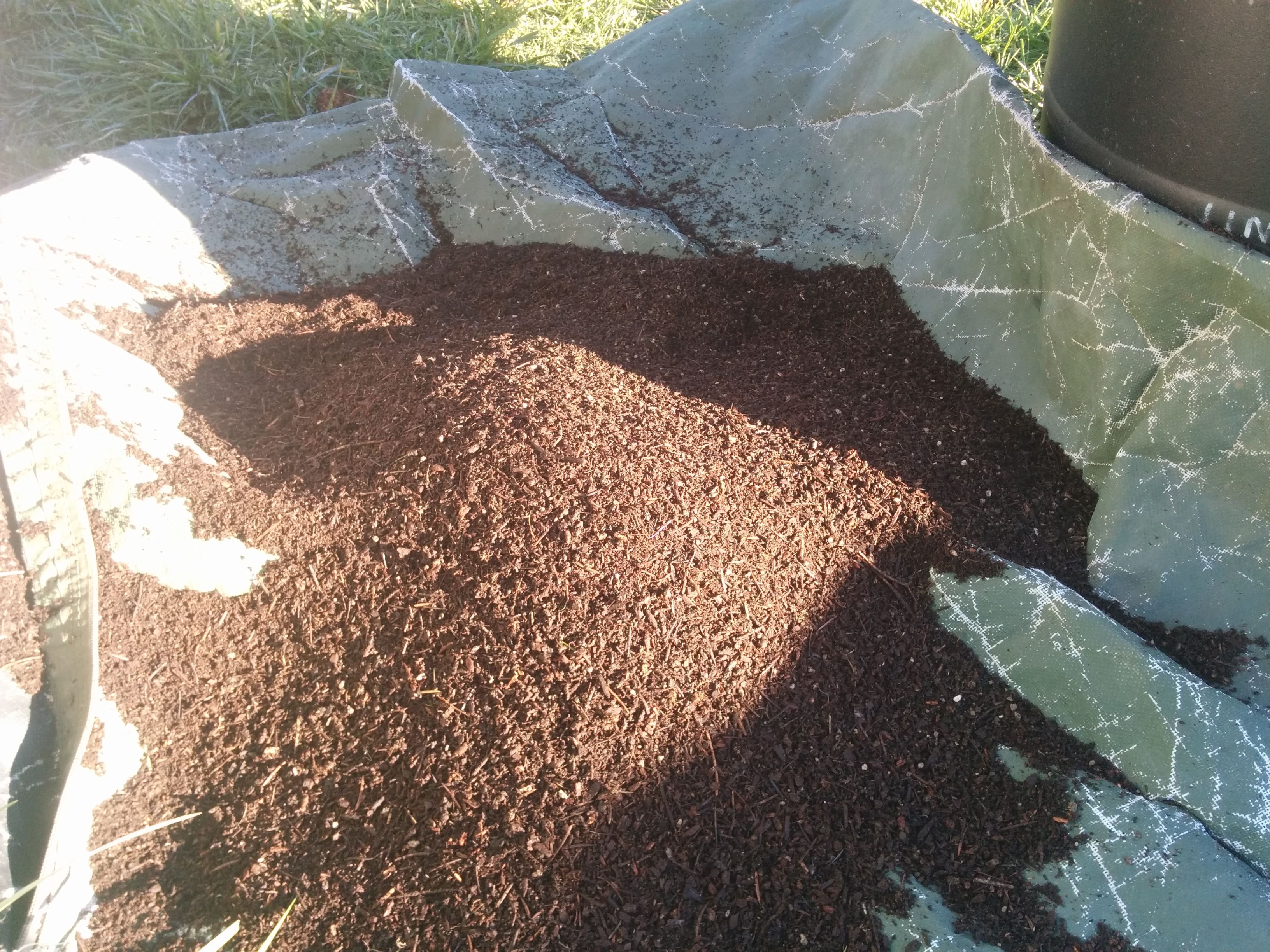
The Recipe
We were using an Alan Chadwick recipe as a model for inspiration. It called for 1/3 sifted turf loam, 1/3 sifted oak leaf mold and 1/3 sharp sand.
Our first design looks like this:
- 2 parts sifted garden soil
- 1 part sifted forest humus
- 1 part medium/course sand
It had all of the characteristics that we were looking for. Water retention, drainage, fluffiness and crumbliness. As we squeezed and crumbled the mixture, we felt that the only improvement we would make would be to have it slightly more crumbly.
So our second design made the following change:
- 1 part sifted garden soil
- 2 parts sifted forest humus
- 1 part medium/course sand
It was definitely more crumbly and fluffy and exactly what we wanted! We were very happy with this mix. We ended up making one batch of the first mix and two batches of the 2nd mix, keeping track of which is which so that we can monitor each and see how they compare during the propagation season.
Of course your results may vary depending on the composition of your soil, etc. and you may need to adjust accordingly.
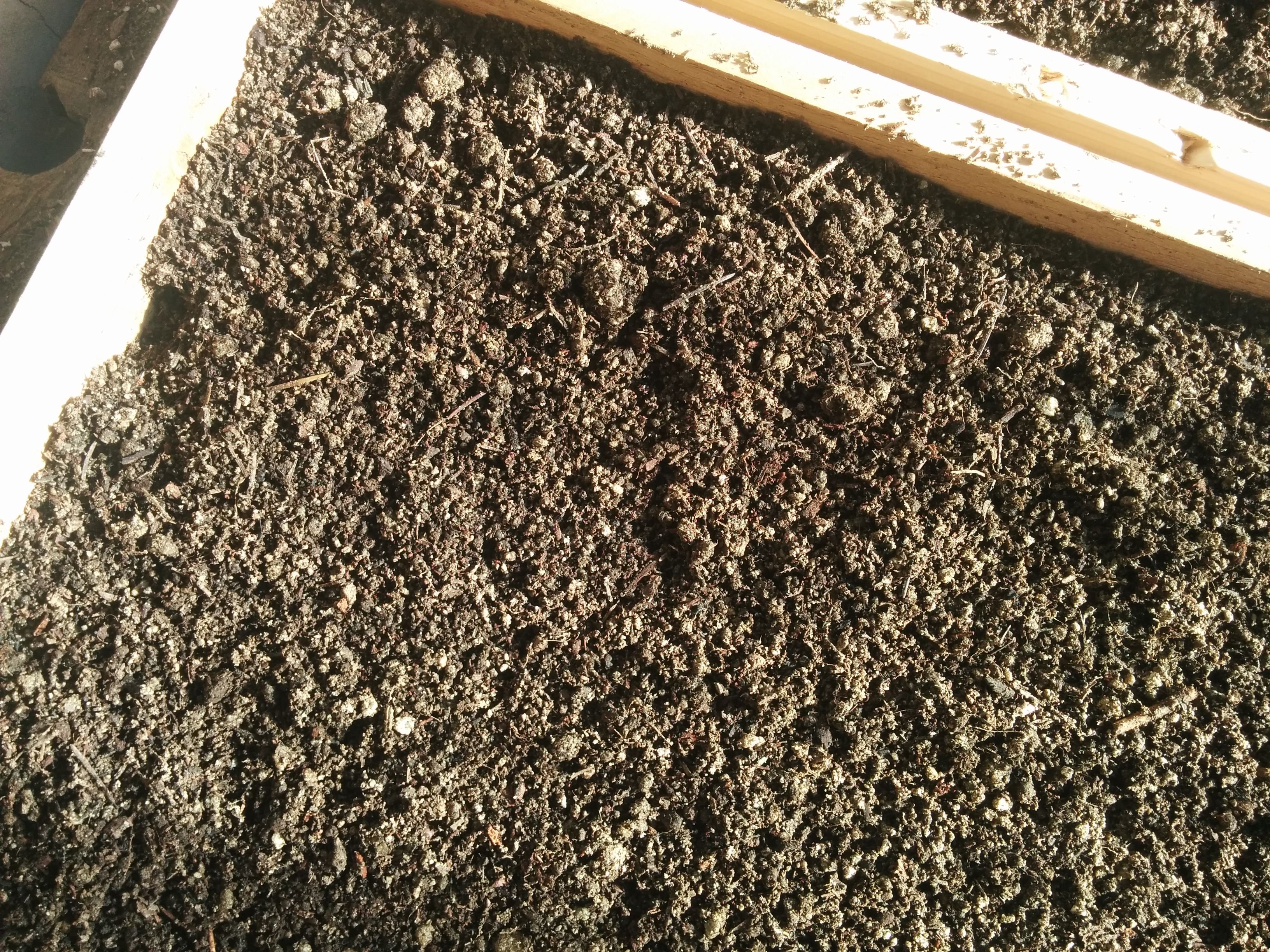
When we were collecting and sifting materials we used 5 gallon buckets as measuring device. We used the buckets to measure the material before we sifted it. We realized halfway through that the results would turn out slightly different if we measured after the material was sifted.
In the future we'd probably want to have a propagation station with large bins of presifted material that we can tap into for easily putting together soil mixes. For our current purposes, this "roughing" it is just fine.
Before filling our seed flats we lined the bottom with a thin layer of oak leaves for two reasons. It helps prevent soil from slipping through the cracks. The second is I heard that oak leaves in general have a chemical that help with seed germination. I have no clue if this is actually true and can't find info to back it up online but it doesn't hurt!
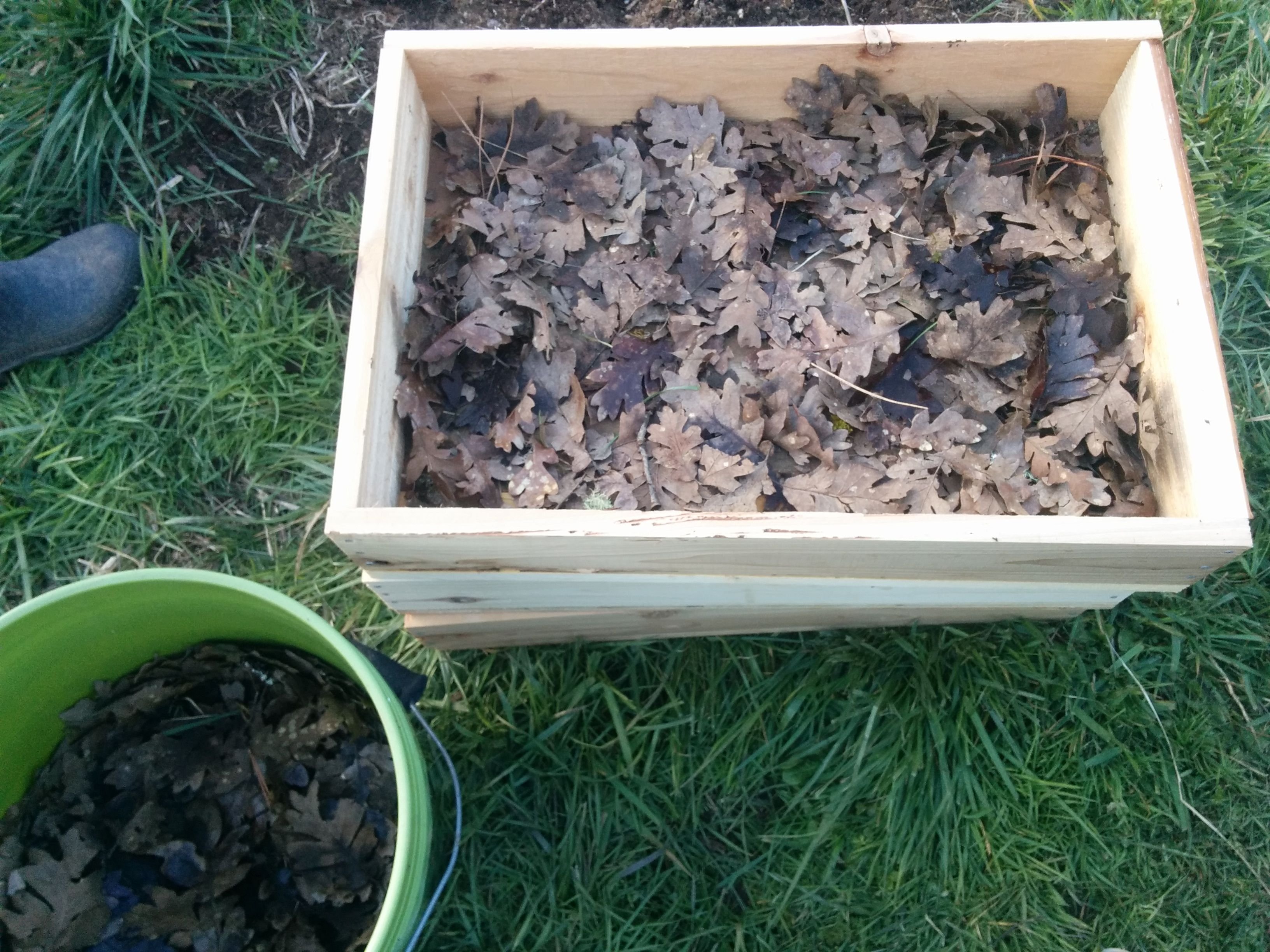
And finally the trays are filled! You'll want to tap your trays and tamp down the dry soil to make sure it is pressed firmly to get rid of excess air pockets that would settle later when it is weighed down by water. In our case we were already working with moist soil so tamping it down was not as critical - it's not as fluffy as dry potting soil.
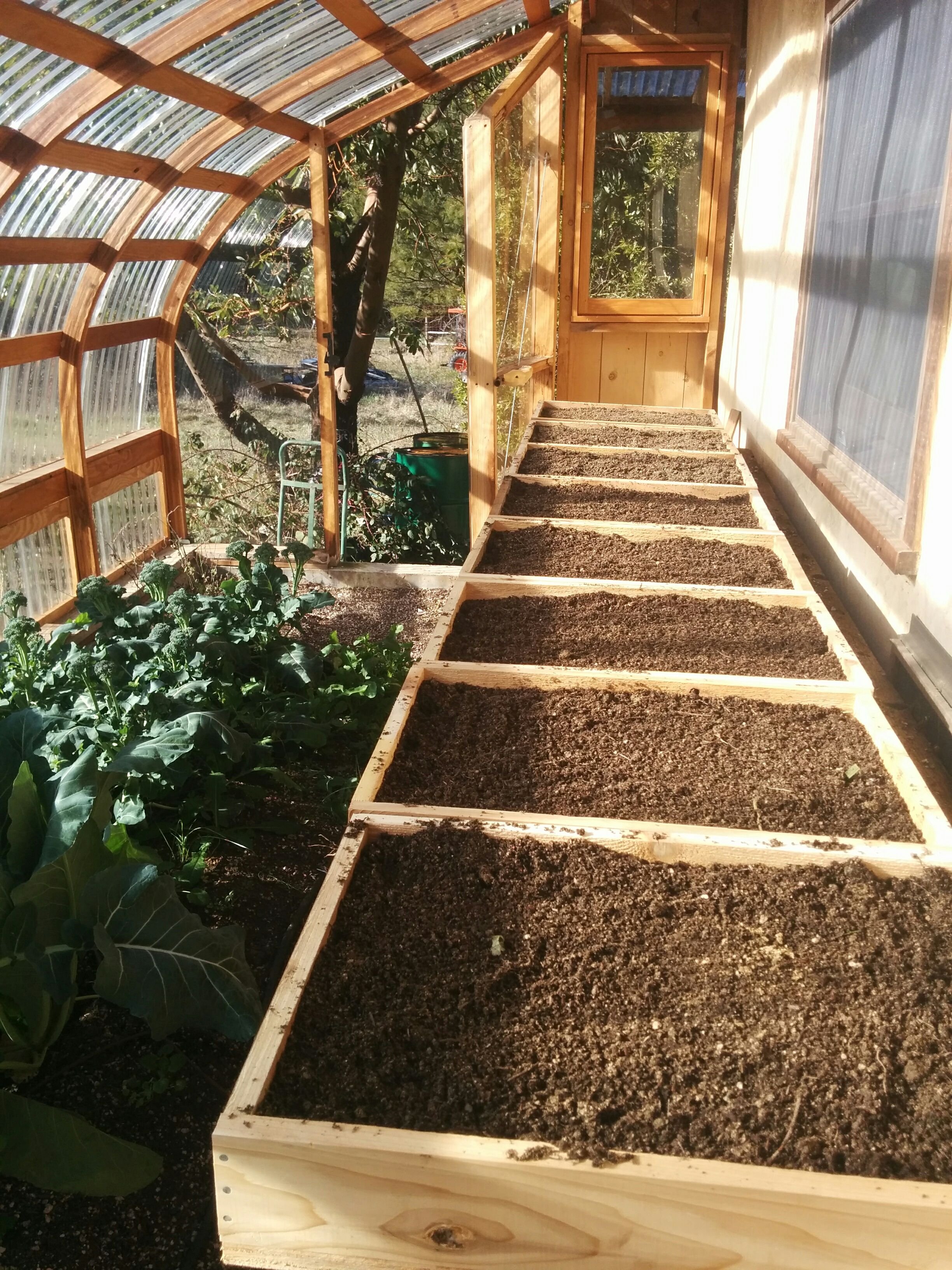
We filled 13 of our 19 wooden flats with 3 batches of this soil mix. Not bad! And now they are ready for sowing seeds!
One final note I should mention is the use of non-sterile medium for potting soil.
Commercial potting soil is marketed as sterile which is handy in helping prevent fungus, mold, disease or pathogens from harming your delicate seedlings. You also wont find any harmful insects in the potting soil. I learned that potting soils are sterilized with chemicals, or in some cases steam.
In our case we are willing to forgo the sterility because:
- Sterile is not a word we are fond of
- We are confident in healthy soil life in the materials we tapped into and
- If damping off due to excess moisture or some other unfavorable event happens we can take action with homemade anti fungal sprays or a remedy for whatever the case may be, take note and make appropriate changes to our future soil mixes.
Thanks for reading this post! I had made my own soil mixes before in previous gardens but they were less than ideal and less informed with sub par results. Nevertheless I learned from experimenting and this time around I feel like it is the best soil that I've had a hand in making. I'm proud of the soil mix and am confident we will get good results out of it.
I am especially glad to have worked with @idyllwild to make this soil mix. We both learned from eachother and had fun concocting this batch of soil!
Soon I will share how we sowed our seeds in this homemade potting soil!
